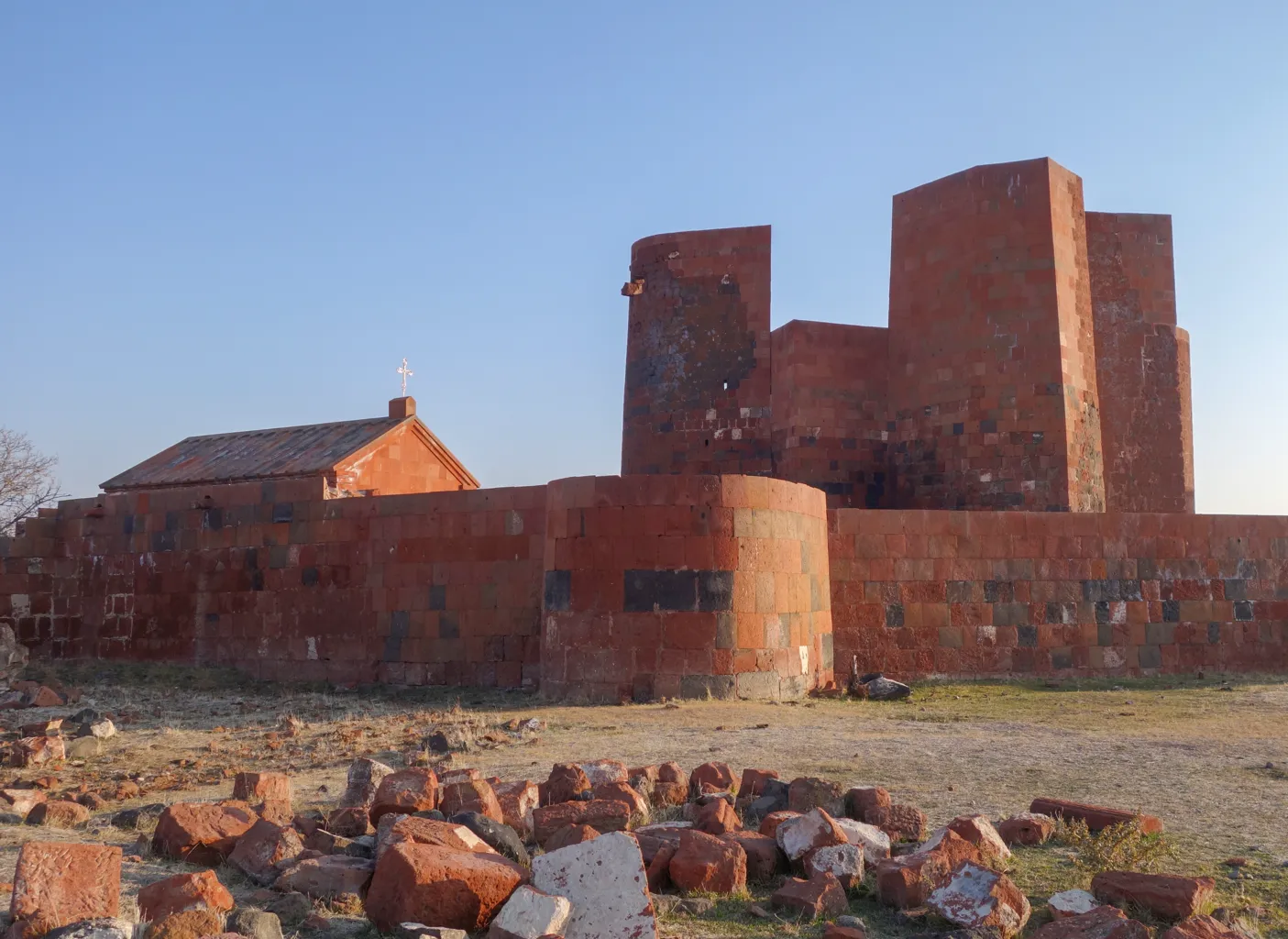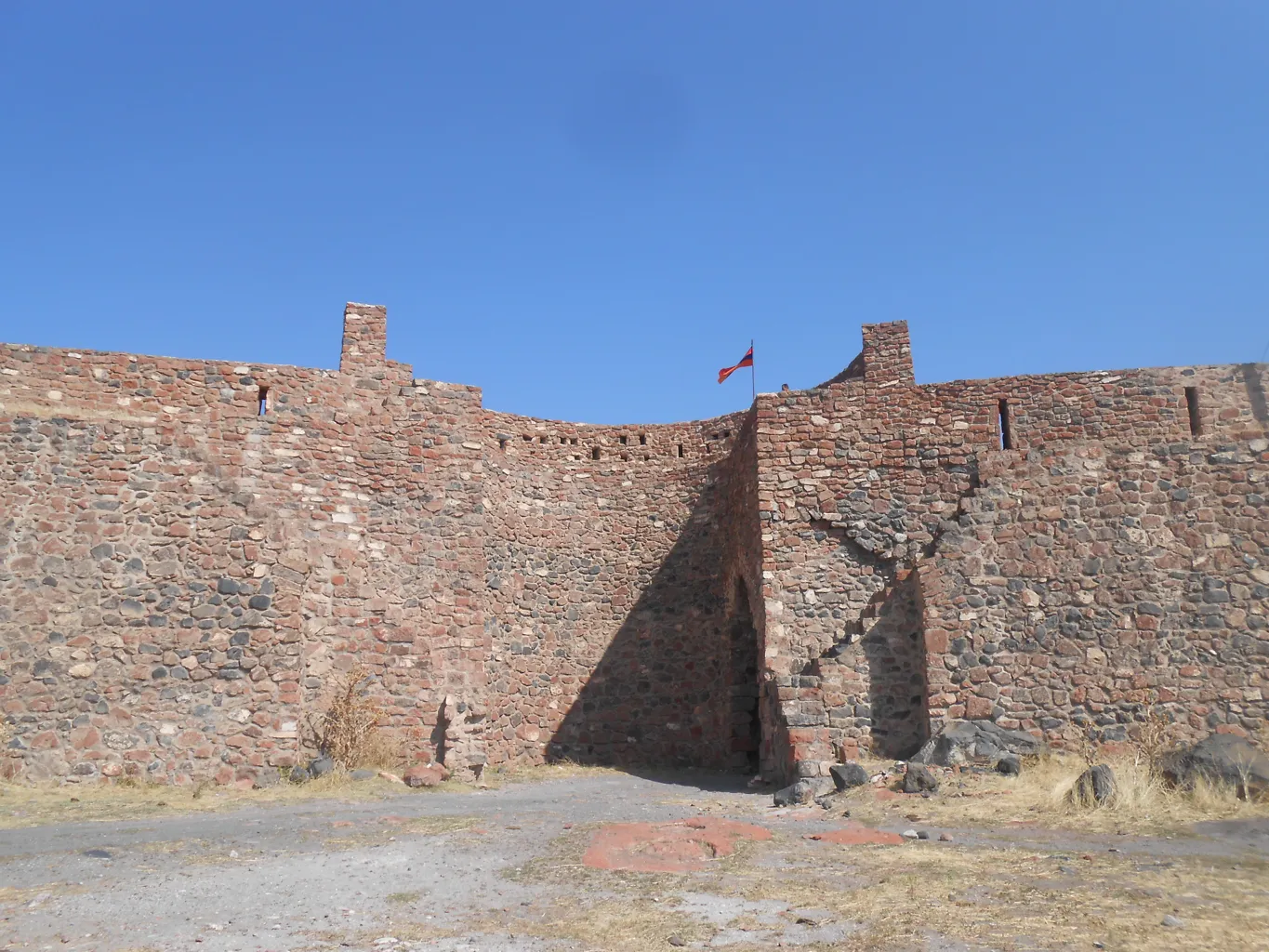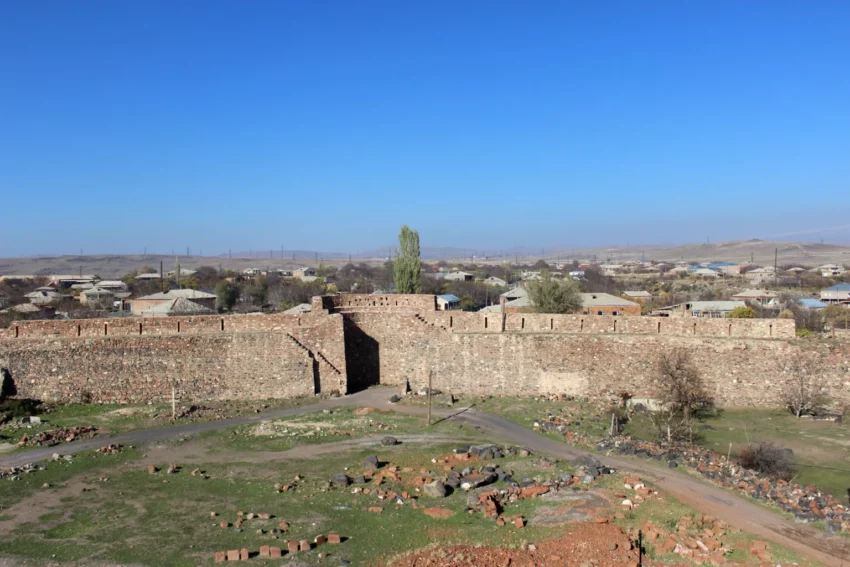Overview of Dashtadem Fortress
Dashtadem Fortress, also known as Qagheni Fortress, is a significant historical site located in the Aragatsotn Province of Armenia, near the village of Dashtadem. This fortress spans a broad timeline from the 5th to the 19th centuries AD, showcasing a variety of architectural styles and modifications that reflect the diverse historical periods it has witnessed.
Get your dose of History via Email
Architectural Features of Dashtadem Fortress
The fortress is encircled by an octagonal wall constructed in the early 19th century, featuring eight bastions connected by curtain walls. These bastions are primarily polygonal, with one semi-circular bastion to the north. This design was strategic, allowing for defensive fire from the flanks to protect the curtain walls and adjacent bastions effectively. The main gate, positioned at a right angle from the east of the northern bastion, was designed to prevent direct cavalry charges, enhancing the fortress’s defensibility.
Above the arched gateway, the exterior walls are adorned with low-relief depictions of lions, adding an artistic element to the fortress’s robust military architecture. Inside, the fortress comprises a keep surrounded by a low, irregular decagonal wall, which includes a 5th-century chapel of S. Sargis. The keep itself features four semi-circular towers, believed to be from the 12th century, which were later additions to the pre-existing 10th-century Armenian fortifications.

Historical Significance
One of the most notable features of Dashtadem Fortress is the Arabic dedicatory inscription on the east wall of the fortress keep, dated 1174 AD. This inscription, written in Kufic script, attributes the structure to Sultan ibn Mahmud of the Shaddadid dynasty, emphasizing the Islamic influence during that period.
The fortress has also served practical residential purposes; until recent renovations, it was inhabited by local shepherds and their families. This aspect highlights the continuous use and adaptation of the site through various historical phases.
Excavations and Research
Archaeological interest in Dashtadem Fortress has been significant, with systematic excavations revealing multiple cultural layers that span from the 12th to the 20th centuries. These findings have provided valuable insights into the architectural and historical development of the site, confirming its role as a key military and residential complex through various epochs.

Conclusion
Dashtadem Fortress stands as a testament to Armenia’s rich historical and architectural heritage. Its strategic design, combined with the cultural imprints left by different rulers, offers a unique glimpse into the region’s complex past. The ongoing archaeological research and preservation efforts continue to uncover the depths of history encapsulated within this formidable structure, making it an essential subject of study for historians and archaeologists alike.
Sources:

